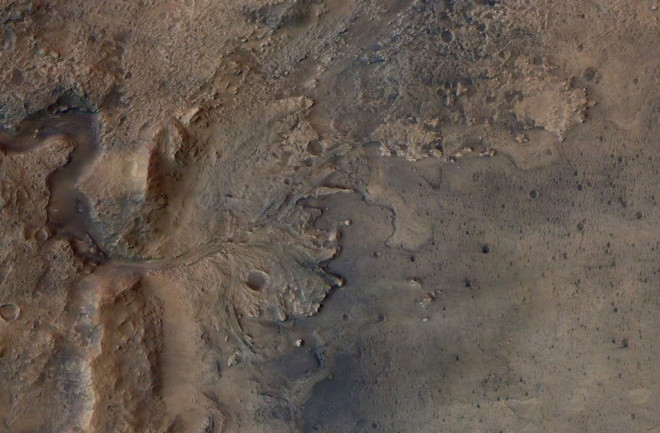The Jezero crater has captivated scientists since its discovery in 2005. Some studies suggested that the crater was home to an ancient lake with flowing rivers that dried out between 3.5 billion years and 3.8 billion years ago.
In a new study, more evidence gathered by the Perseverance Rover’s ground penetrating radar confirmed the presence of lake sediments. The find has reignited anticipation for when rock samples from Mars return to Earth in the early to mid-2030s.
“From orbit we can see a bunch of different deposits, but we can’t tell for sure if what we’re seeing is their original state, or if we’re seeing the conclusion of a long geological story,” said David Paige, study first author and planetary scientist at UCLA, in a statement. “To tell how these things formed, we need to see below the surface.”
Radar Reveals Hints of Mars’ Past
Between May and December of 2022, the Perseverance Rover drove from the crater’s floor to the delta and collected data on what lies underneath the sediment using the Rader Imager for Mars’ Subsurface Experiment (RIMFAX).
The radar forms images by sending waves at 10-centimeter intervals under the surface, which bounce back and detect the rock layers and other features underground. Each feature’s shape, density, and angles are captured and reflected as an image. RIMFAX can reach about 20 meters below.
Read More: Chasing Life on Mars
Signs of Water?
While the river or lake is no longer there, researchers can see where water flowed and carried minerals into the lake. In 2008, scientists found evidence of the clay minerals in the fan-like structure seen in the crater.
In the more recent studies that used RIMFAX, they showed that underneath the Jezero crater, different layers of rock and sediment were at an angle instead of lying flat. Researchers suspected that the thickness and shapes of the layers formed through flowing lava that cooled, or from an ancient water feature older than the one on the crater floor.
The Mars Reconnaissance Orbiter also previously picked up evidence of clay in the crater that formed if water was present in the area. On Earth, clay like this is found in the Mississippi River delta.
Read More: Here's What the Ice on Mars Looks Like
Lake Sediment
So, what could have caused the uneven sediments? The data found that two sediment displacement events occurred between two other events of erosion. Since the deposits are not flat, the team suspects the erosion happened before the lake sediments flowed there, especially since the deposition is flat, like the lake sediments found on Earth.
The Jezero crater possibly filled with water, and sediments were deposited on the crater floor. As the lake changed shape, dried, and disappeared over time, sediments eroded and formed features seen by orbiters and rovers today.
“The changes we see preserved in the rock record are driven by large-scale changes in the Martian environment,” said Paige in a statement. “It’s cool that we can see so much evidence of change in such a small geographic area, which allows us to extend our findings to the scale of the entire crater.”
Read More: Jezero Crater: A Closer Look at the Perseverance Rover's Landing Site
Mars Samples
The rover began collecting samples from the Jezero crater in 2021. It has collected 23 out of its planned 38 samples and 3 out of the five total witness tubes. If microbial life was once abundant in the Jezero Crater, then evidence of this may be in the crater’s rocks and sediments. Perseverance’s radar work may provide more context for what the sample tubes contain.
Read More: Why Haven't Humans Reached Mars?
Article Sources
Our writers at Discovermagazine.com use peer-reviewed studies and high quality sources for our articles, and our editors review for accuracy, and trustworthiness. Review the sources used below for this article:
NASA Science. Perseverance Rover's Landing Site: Jezero Crater.
UCLA Newsroom. First underground radar images from Mars Perseverance rover reveal some surprises.
Brown University. Ancient Martian lake system records two water-related events.
Science Advances. Ground penetrating radar observations of the contact between the western delta and the crater floor of Jezero Crater, Mars.
Read More: What Would a Trip to Mars Look Like For a Tourist?

